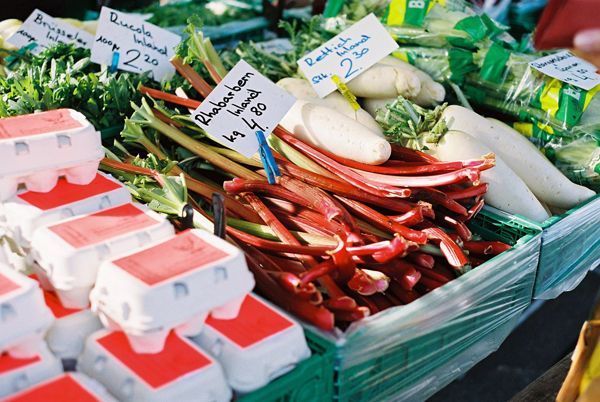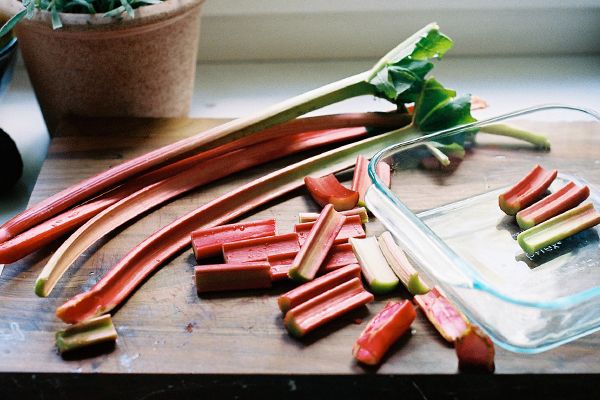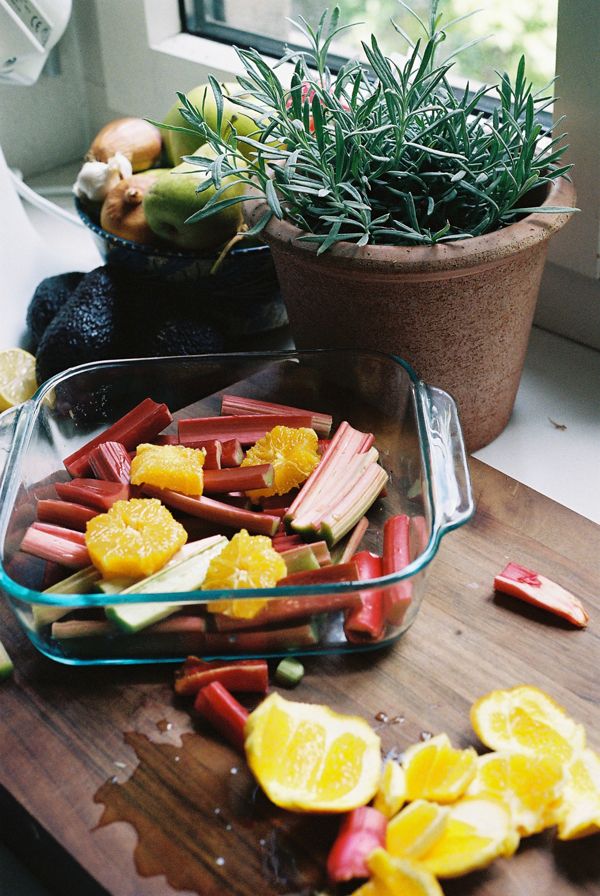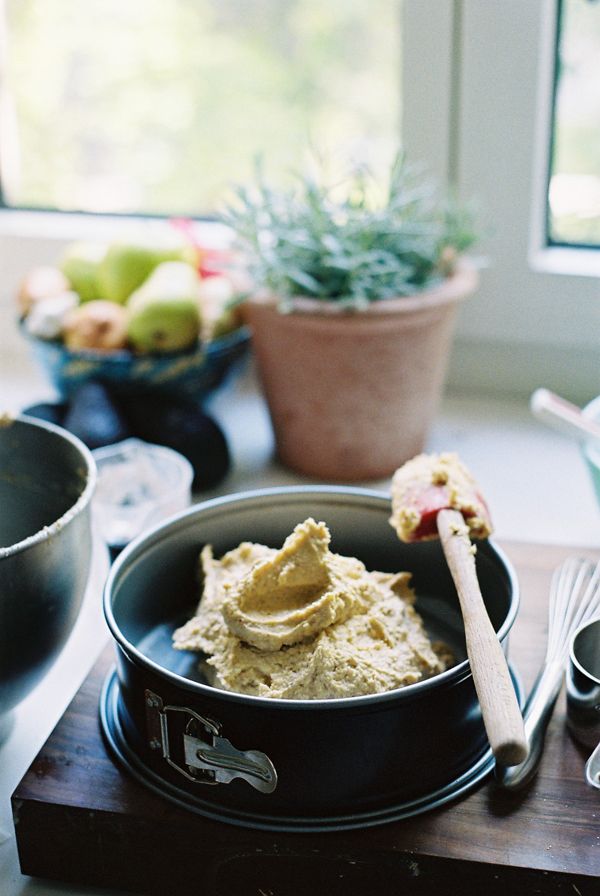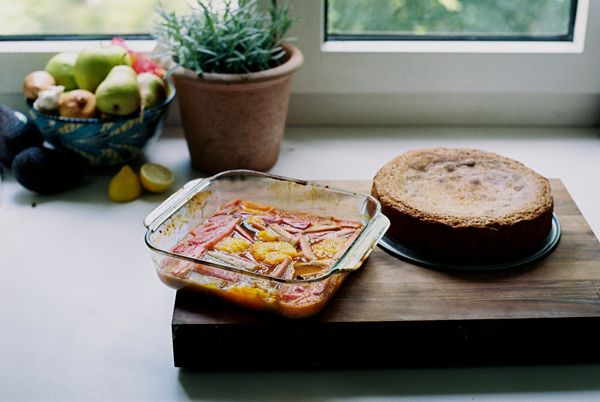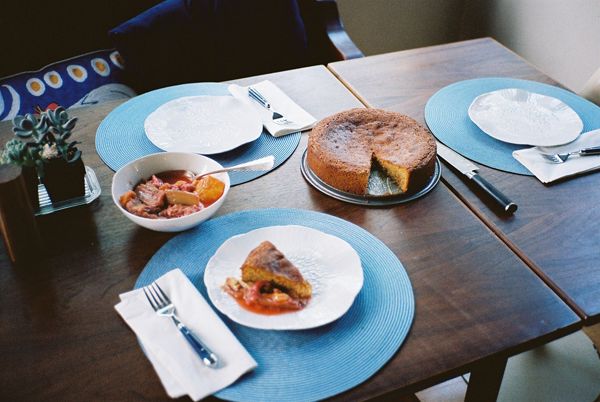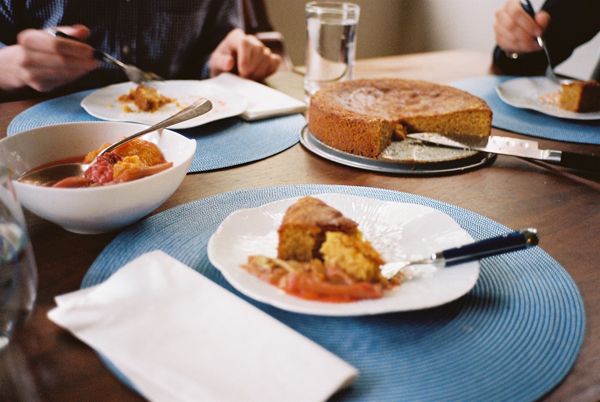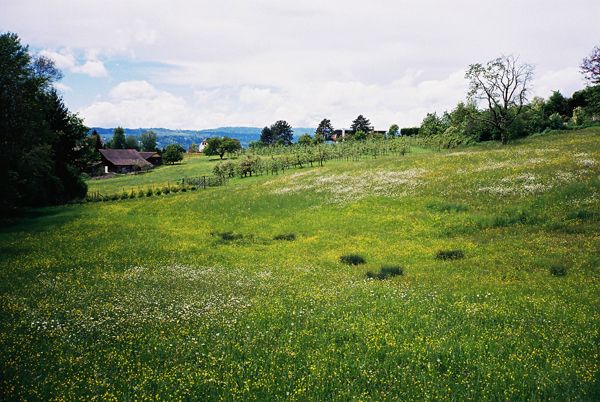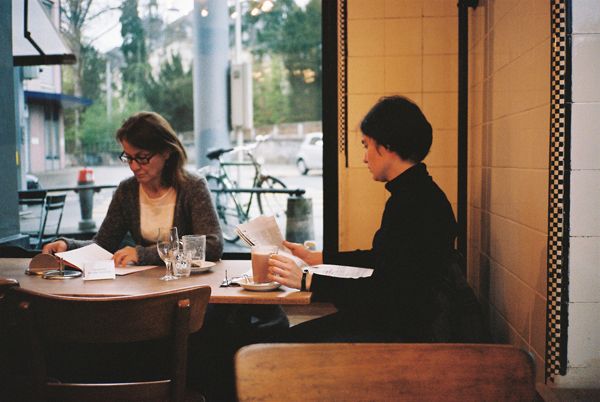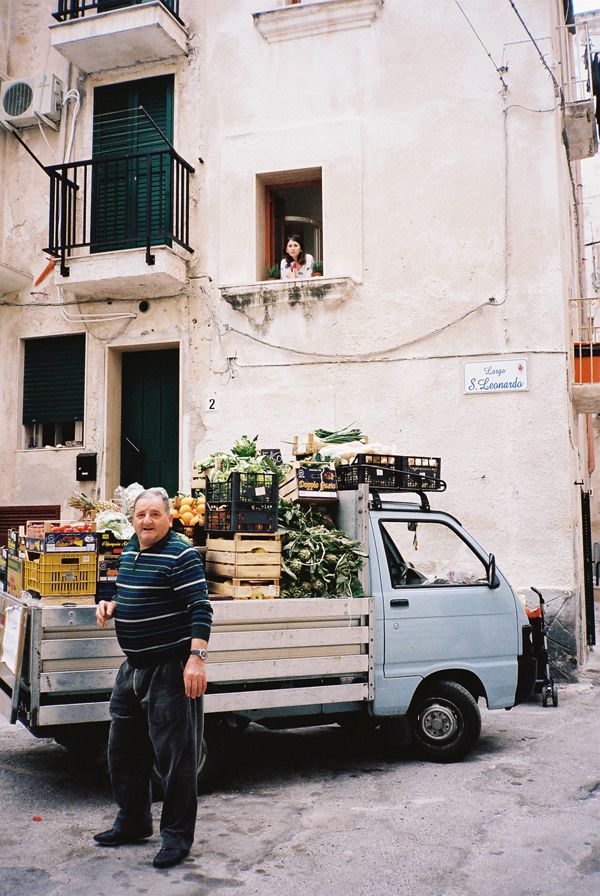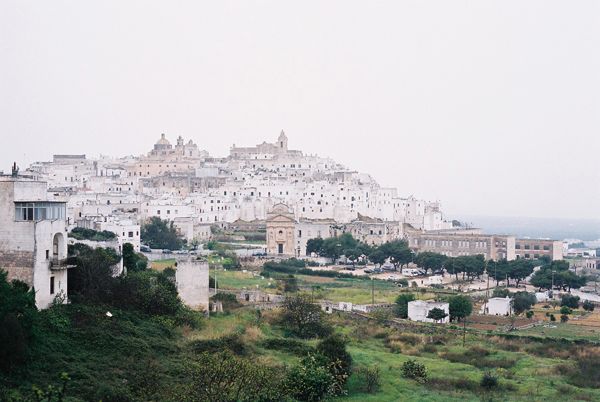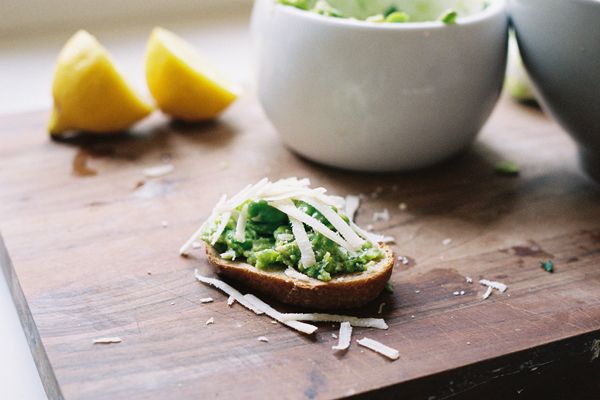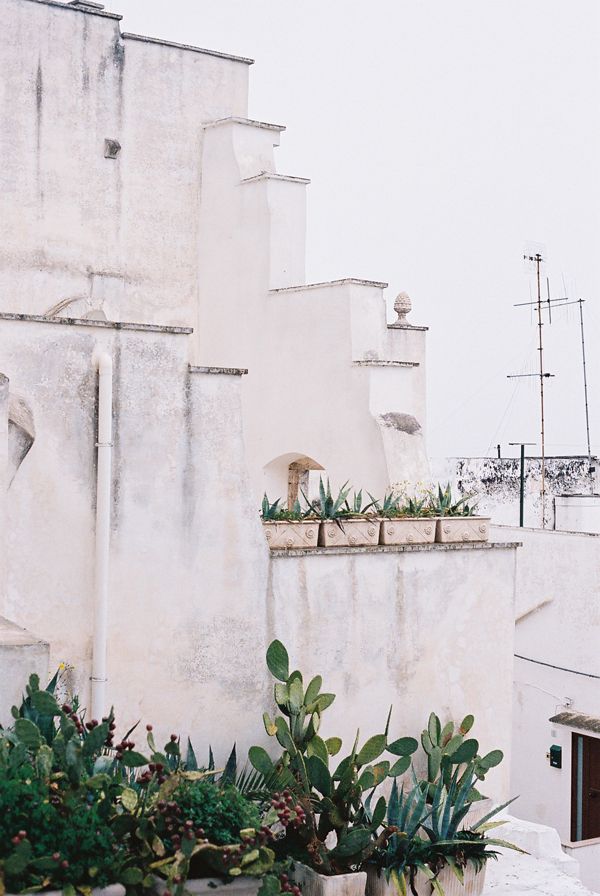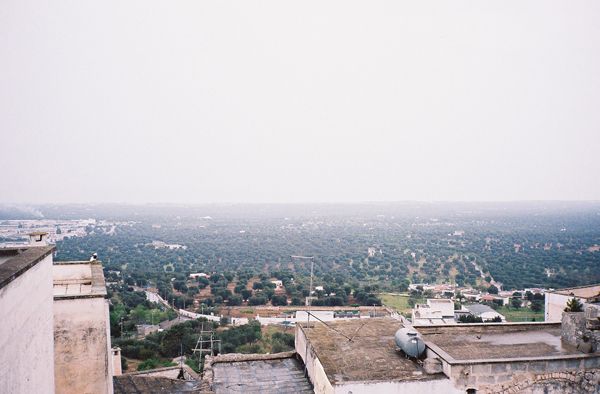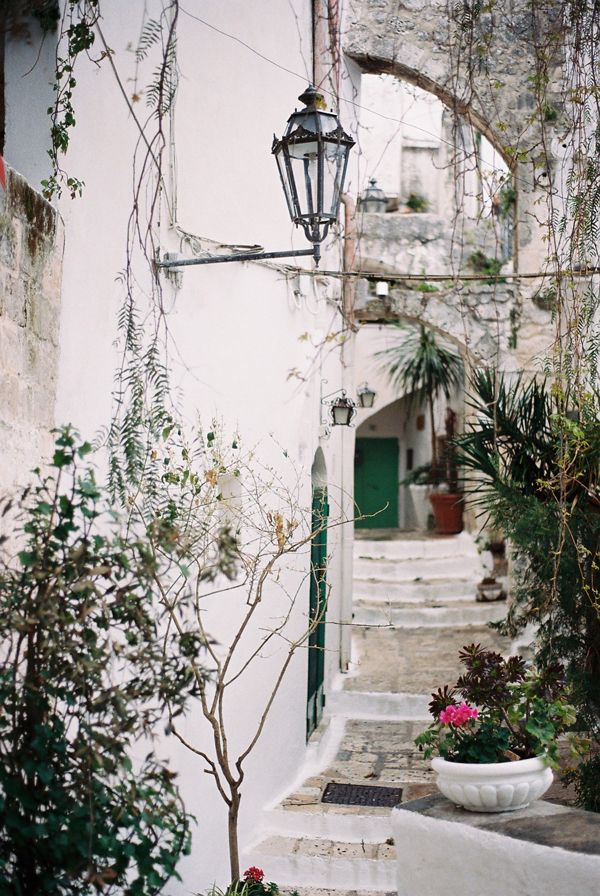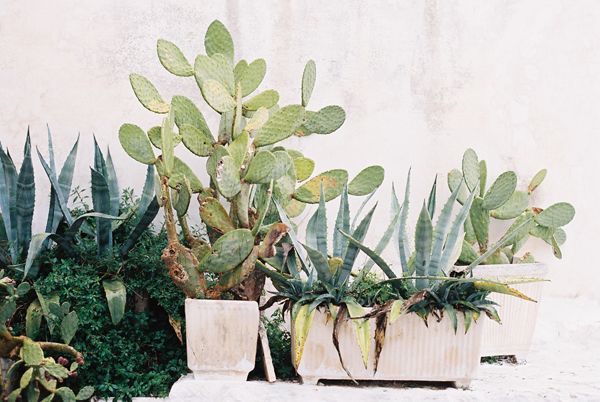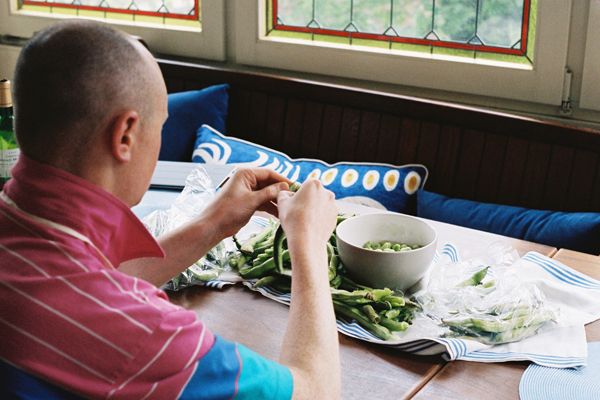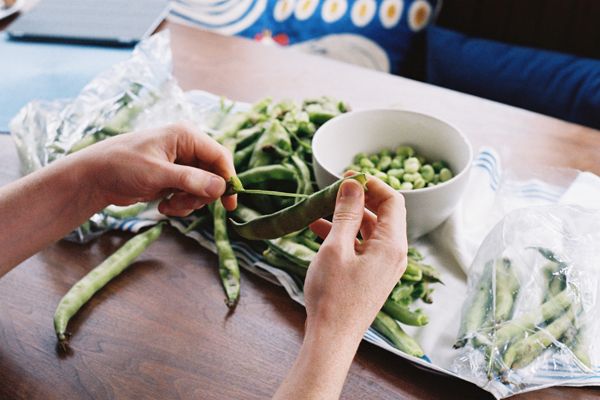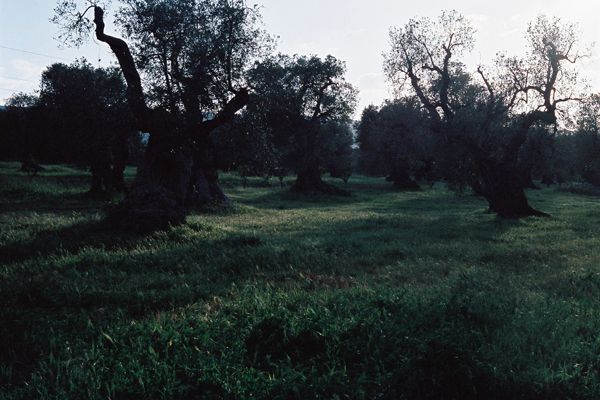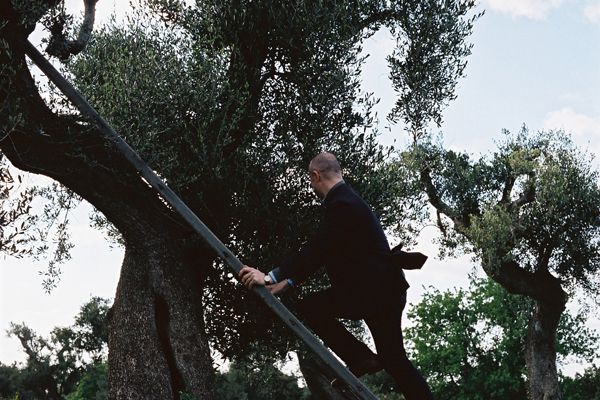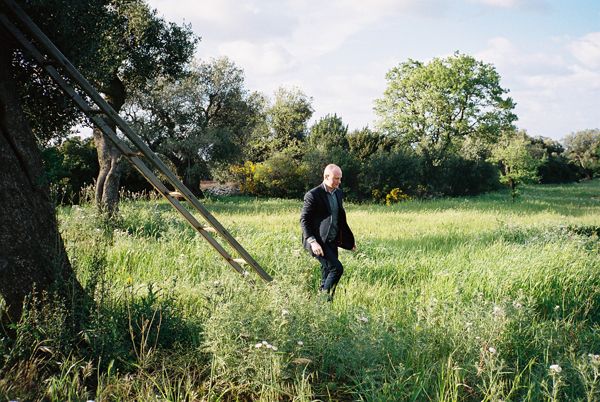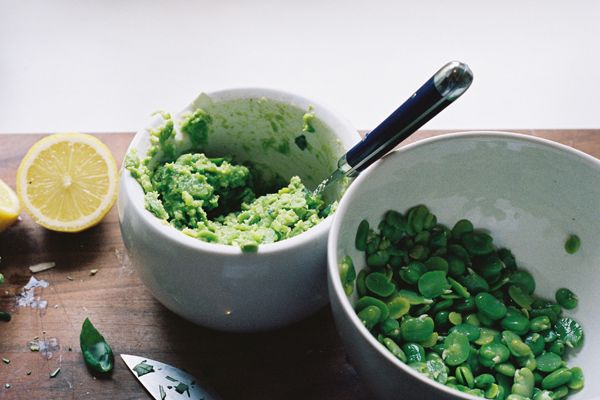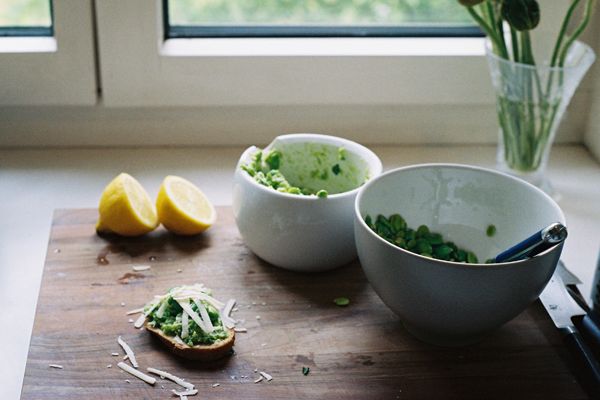All I wanted was a kilo of Rhubarb. It should have been an easy, and simple, just a two-sentence exchange that would leave me with a bag of bright magenta stalks to place in my bag before I headed off in search of my favorite dried figs and some oranges. But no, my "Ich möchte gern ein Kilo Rhabarber, bitte" was followed immediately by some throaty, guttural, loopy Swiss German that I could tell had nothing to do with "Yes, that will be 4 francs 80 please."
As it goes with most of my attempted German conversations I had to ask, "Sprechen Sie English?" to which the response was "ein bisschen." If I didn't know any better I might assume that ein bisschen means a lot, or yes of course, or I'm fluent, or even I can talk circles around your native English, don't you even worry about it. (Don't put it past German to have one word for that). It would be sensible to think this because those two little words, ein bisschen, are frequently followed by a fluid stream of perfectly accented English, wholly obliterating the definition of ein bisschen - ein bisschen, un peu, a little, un poco.
My request for rhubarb followed this all-too-familiar ein bisschen pattern as the woman went on to ask me in English if I wanted thin or thick stalks or a mix of both, and what was I planning on using the rhubarb for? Sometimes I don't even know why I attempt to speak German. Ein bisschen followed by comfortable English sets the bar too high for those of us who would like to say that we speak a little German. I can't rightly say that I speak a little German when a little has come to mean a lot.
In my push to learn a lot I have started sticking post-it notes on every conceivable surface, especially in the kitchen, so that I can remember that whisk is der Schneebesen (love that one), grater is die Reibe, and measuring cup is der Messbecher. The post it notes are color coordinated; green for der (masculine) nouns, pink for die (feminine) nouns, and yellow for das (neutral) nouns. It's like Reading Rainbow in our apartment right now, just without the butterflies.
Don't you go assuming that it's easy to know when a noun is feminine, masculine or neutral. It's not. Fork, spoon and knife are a great example of how muddling the German language can be. I would assume that a spoon, with all of it's gentle curves and smooth scooping abilities would be feminine, but no, it's der Löffel. And fork with it's stabbing, aggressive, sharp tongs would be masculine, but it is feminine, die Gabel, while knife with it's typically masculine -er ending is in fact neutral, das Messer.
I'm willing to battle der Löffel and die Gabel because I'm eager to have a conversation in German about rhubarb and where it comes from and whether thin or thick stalks are preferable for jam, and what about for roasting with oranges and a vanilla bean? This is a good place to transition from my German rant to a melt-in-your-mouth rhubarb compote and crumbly polenta cake. Just so you know, these two go-together, don't think about making one without the other, they need each other, literally. The compote is strained and the sweet, slightly tart, juice is poured over the polenta cake, augmenting the buttery almond flavor and softening the pebbly polenta to a point of desirable sogginess.
I probably lost you at "sogginess," but hold tight because the soggy, crumbly, nature of this cake, is what makes it special. The texture steps softly between cake and custard, but neither one edges out the other, instead they release their competitive edge and sink into one another. This "sigh" is evidenced in the concave shape of the cake, a perfect hollow for sweet rhubarb-orange juices. The vanilla bean, which roasted along side the rhubarb and orange, adds a faint whisper to the entire concoction, nestling it's way into the crannies of the polenta cake and only grabbing your attention when you go looking for it. Each flavor adds something - a little tang, twinge or crispy sweetness - to the cake, and the cake in turn takes on all of these flavors and melds them into something new, something largely unrecognizable, but notably unique and sensational.
I like to think of this as the marriage of two very talented British chefs, brought together by one very keen matchmaker. The rhubarb-orange compote comes from Nigel Slater and the polenta cake comes from Nigella Lawson, and I'll take credit as the matchmaker who helped them find ever lasting love. Nigella's polenta cake called for lemon syrup, but with all of the rhubarb season at it's peak I couldn't justify not using rhubarb to flavor the cake, so in came Nigel's perfectly tart, perfectly sweet compote. May they live happily ever after.
// Polenta Cake //
adapted from Nigella Lawson's Nigella's Kitchen
14 tablespoons / 200 g unsalted butter, softened, plus more for greasing pan
1 cup superfine raw sugar (or regular)
2 cups almond flour
3/4 fine polenta - instant
1 1/2 tsp baking powder
3 eggs
zest from one oranges (use orange for rhubarb-orange compote)
Preheat the oven to 350ºF / 180ºC. Line a 9" spring form pan with parchment paper and grease the sides with butter.
Beat the butter until light in color. Add in the sugar and continue beating until light and fluffy.
While the butter is beating mix the almond flour, polenta, and baking powder in a large bowl. Once the butter-sugar is the right texture slowly mix this dry mixture into the butter-sugar, alternating with an egg, until all the dry mix and eggs are in the batter. Beat in the orange zest.
Spoon and scrape the batter into your spring form pan, smoothing the top with a rubber spatula. Bake for about 40 minutes or until a cake tester comes out cleanish and the edges of the cake have started to shrink away from the sides of the pan.
Using a needle or narrow cake tester, poke the cake all over, from the center out to the edges.
While the cake is cooling make the rhubarb compote.
While the cake is cooling make the rhubarb compote.
// Rhubarb and Orange //
adapted from Nigel Slater's Tender Volume II
1 1/2 lbs / 750 g rhubarb
4 oranges
raw or regular sugar
a vanilla bean
Preheat the oven to 400ºF / 200ºC. Rinse the rhubarb and cut off and discard any leaves. Slice the stalks into 2-3 inch lengths and place in an oven safe dish.
Remove the peel from 2 oranges, cutting away any white pith, then slice the oranges and tuck them in amongst the rhubarb. Squeeze the juice from the two remaining oranges over the rhubarb. Sweeten with one heaping tablespoon of sugar - or a bit more if your rhubarb is very tart. Add the vanilla pod, pressing it between the rhubarb. Cover the dish with foil and bake until the rhubarb is tender enough to crush with a fork, about 30 minutes.
Strain the juices out of the dish. Pour over the polenta cake, making sure to cover the entire surface, not just the center. You will not be able to use all the juice, but add as much as you think the cake can comfortably absorb and pour the rest back into the rhubarb-orange mix. Serve the baked rhubarb along side the cake.
If you didn't realize, this cake is gluten free. I've taken up the habit of marking gluten free recipes and hoarding them until our friend Jess comes to dinner. It's good to have gluten free friends, they introduce you to wonderful foods like polenta and quinoa and macaroons. Find yourself a gluten free friend (it shouldn't be hard these days, seems to be the new wave), and make them rhubarb-polenta cake for dessert.
It also doubles as a wonderful breakfast cake. I know, I ate it for breakfast three days last week. It also makes a great snack cake, I know that too, because I ate slivers of it every afternoon.
All this cake will inspire you to go for a walk, a long walk so you can come back hungry for more cake.

